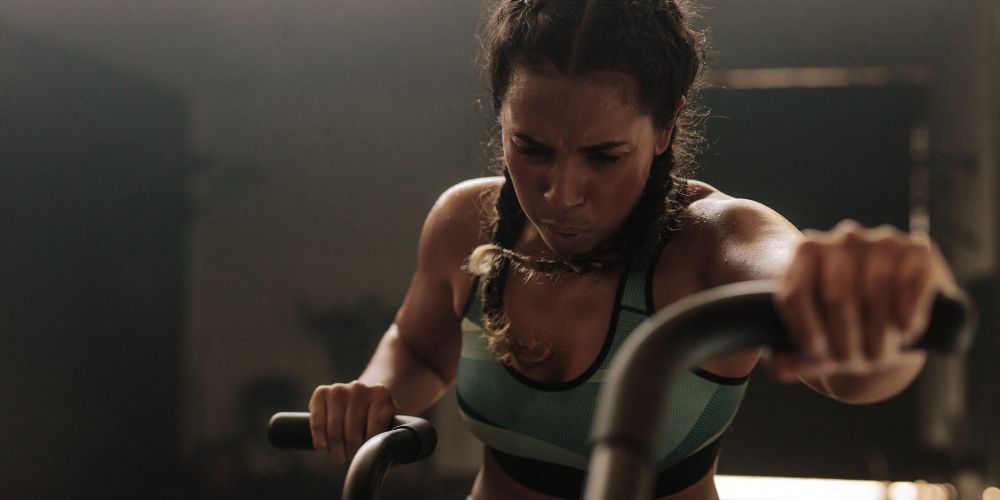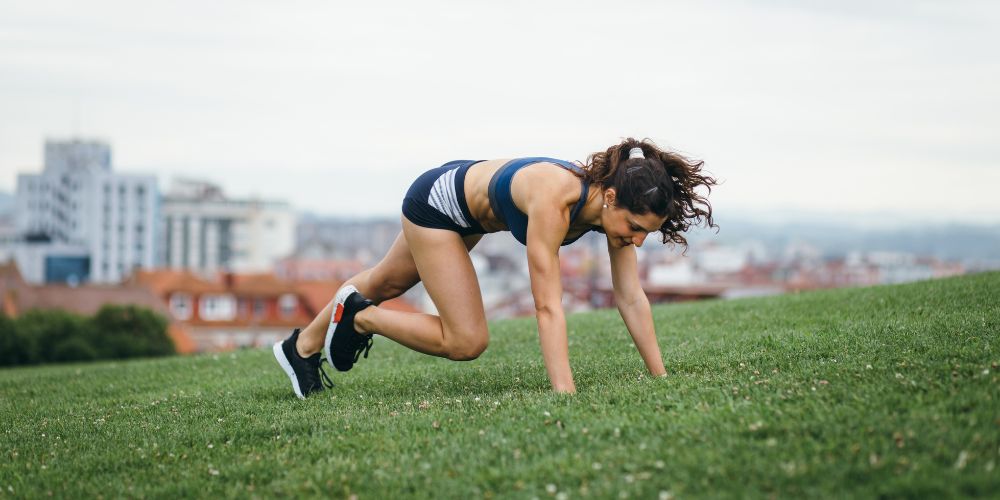HIIT, or high-intensity interval training, is popular for inducing fast changes in performance and body composition with little investment in training time. Some HIIT workouts can last 10 minutes and still kick your butt! But is HIIT suitable for building muscle?
HIIT does not build muscle as it is a cardiovascular exercise that doesn’t satisfy the central tenant of muscle growth mechanical tension.
This isn’t the only reason HIIT doesn’t build muscle. But is it possible to modify HIIT to build muscle, and what else can you do for muscle hypertrophy?
Table of Contents
Does HIIT Build Muscle?
HIIT does not build muscle as it doesn’t satisfy the mechanisms of hypertrophy. This is predominantly mechanical tension[1][2][3]. Mechanical tension is maximized through force generation and stretch.
Meaning you typically need to lift heavy loads through a full range of motion or lighter loads close to failure [4]. Another indirect hypertrophy mechanism is metabolic stress, which is the build-up of by-products from energy production.
Think of the burn you feel during the last few reps of a hard set. HIIT doesn’t maximize mechanical tension and, therefore, doesn’t build muscle even though metabolic stress may be high during repetitive tasks like high-rep bodyweight squats.
Consider that HIIT is typically done using cyclical cardio exercises like running, cycling, and rowing adds to the reasons you won’t build muscle. Further, cardiovascular exercises signal the opposite molecular pathway to muscle growth.
Endurance exercise signals the AMPK pathway responsible for endurance adaptations [5]. Instead, you want to activate the mTOR pathway responsible for muscle growth. Stimulating the AMPK pathway through endurance exercise inhibits the mTOR pathway minimizing the muscle-building response [5][6].
This response is influenced by how long and how hard your HIIT session is, lasting up to 3 hours before returning to baseline.
Is It Better To Do HIIT Or Weight Training?

Whether you focus on HIIT or weight training depends on your training goals. You should focus on weight training to build muscle mass and get stronger. If your goal is to enhance endurance performance, you should focus on HIIT.
But you should never do either. Use HIIT to complement your weight training and vice versa. But prioritize the training method depending on your goals. If it’s getting big and strong, weight train 3-4 times per week and do 1-2 HIIT sessions.
Flip this endurance performance is your priority.
Does HIIT Make You Lose Muscle?
If you do HIIT without lifting weights, you will lose muscle mass. Because HIIT doesn’t stimulate muscle growth, muscle atrophy is likely to occur, especially if you’re not eating enough to maintain your body weight.
To stop muscle loss, lift weights to complement your HIIT training. This way, you get the best of both worlds, enhancing strength, size, and endurance.
Does HIIT Build Muscle Or Burn Fat?

HIIT does neither. As mentioned, building muscle requires maximizing mechanical tension through high resistance and stretch. Burning fat doesn’t happen substantially at the exercise level. It happens over time by consuming fewer calories than you burn while signaling to the body to maintain muscle mass.
How is this done? Through lifting weights. This signals the muscle-building response to let your body know to keep as much muscle as possible and instead use body fat stores to replace the caloric deficit from food.
However, HIIT can be used as a tool to create this caloric deficit to burn fat long term. But it is typically a better approach to create the deficit from your diet vs. more exercise.
What Are The Best HIIT Exercises To Build Muscle?
One way to use HIIT to potentially build muscle mass is to use strength training exercises in a circuit fashion. For example, kettlebell swings, push-ups, and pull-ups would make an excellent three-exercise combo performed in a HIIT circuit format.
However, performing these exercises separately to maximize load and force generation would yield far better results.
Summary
HIIT doesn’t build muscle and should not use in this context. Instead, use HIIT to improve endurance performance using various cyclical cardio modalities like running, cycling, and rowing. Complement HIIT with strength training for a potent combination for building your dream body.
References
1. Schoenfeld, B. J. (2010). The mechanisms of muscle hypertrophy and their application to resistance training. The Journal of Strength & Conditioning Research, 24(10), 2857-2872.
2. Wackerhage, H., Schoenfeld, B. J., Hamilton, D. L., Lehti, M., & Hulmi, J. J. (2019). Stimuli and sensors that initiate skeletal muscle hypertrophy following resistance exercise. Journal of applied physiology.
3. Krzysztofik, M., Wilk, M., Wojdała, G., & Gołaś, A. (2019). Maximizing muscle hypertrophy: a systematic review of advanced resistance training techniques and methods. International journal of environmental research and public health, 16(24), 4897.
4. Schoenfeld, B. J., Grgic, J., Ogborn, D., & Krieger, J. W. (2017). Strength and hypertrophy adaptations between low-vs. high-load resistance training: a systematic review and meta-analysis. The Journal of Strength & Conditioning Research, 31(12), 3508-3523.
5. Methenitis, S. (2018). A brief review on concurrent training: from laboratory to the field. Sports, 6(4), 127.
6. Baar, K. (2014). Using molecular biology to maximize concurrent training. Sports Medicine, 44(2), 117-125.
